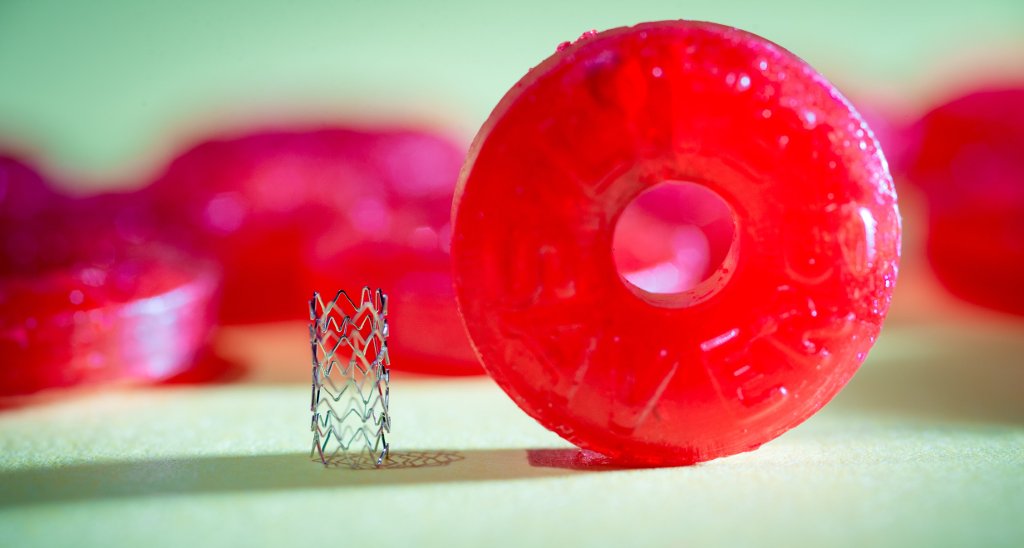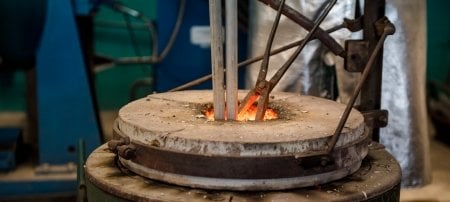In his guest blog, biomedical engineer Jeremy Goldman explains why traditional stents need an upgrade and how zinc alloys may be part of the solution.
I became interested in developing biodegradable metal stents as I began to appreciate the medical need coupled with the considerable engineering innovation that is required. It has been a tremendous challenge in the field to develop a stent metal with suitable material properties that is also non-toxic and harmlessly disappears within one to two years. Developing such a material requires expertise in chemistry, materials science, bioengineering, mechanics, physiology and biology, among other fields of knowledge. Yet it is the enormous challenge combined with the potential to make a breakthrough in treating human disease that inspires me to continue devoting my professional life to this project.
As we approach the realization of this revolutionary device, we have made many exciting discoveries that fill gaps in fundamental scientific knowledge and may lead to new research and development directions.
Traditional Stents
The first question many people ask when they learn about my research interests are why develop a stent that can disappear and what has been tried?
Traditional stents are highly beneficial to a diseased artery in the short term, but their permanent presence harms the healing process in the long term. To address this problem, the medical device industry and academics for the past decade and a half have invested heavily in research to develop arterial stents that can degrade and ultimately disappear.
The main focus of past research has been with polymeric materials along with iron and magnesium metallic materials. Unfortunately, these extensive efforts have met with limited success. Polymers lack the strength required for stents. Magnesium degrades too quickly and fails to support the artery for a sufficient time. Iron degrades too slowly and a harmful rust product accumulates in the artery. Having considered the drawbacks to these previous materials, my team has come up with a promising solution—zinc and its alloys.
Zinc-based Stents
I began my foray into the field of biodegradable metals in 2010 when a manager of R&D at a major medical device company approached me with a serious problem he had encountered while developing biodegradable stents. Unfortunately, materials his group had selected from benchtop tests were not performing as predicted when they were manufactured into stents and implanted into the arteries of pigs. The limited ability to approximate a material’s performance in animal testing was a major problem for industry and academia because stent manufacturing and testing is very time consuming, expensive, and the number of different metals and alloys that need to be evaluated is formidable.
I was intrigued by the problem and began reading through the scientific literature to learn as much as I could about what was known in the field. My initial goal was to develop a new intermediary testing system that would retain both the simplicity and low cost of the benchtop testing without sacrificing the physiological relevance of the animal model.
To achieve this goal, I devised a wire implantation model to be used in rat arteries. My model has two major advantages over previous testing methods: First, it is much easier to manufacture a wire of candidate metals than a stent. And second, rats are inexpensive relative to pigs. In a nutshell, we advance a simple wire of the selected metal into the largest artery in the rat. Then, at pre-determined time-points, we evaluate the wire and host response in a similar fashion as stents are evaluated in pigs. Using this model, my group dramatically accelerated the materials screening process and ultimately identified zinc as a breakthrough material.
Next Steps
We published a groundbreaking study in 2013 where we showed that zinc uniquely exhibits an ideal degradation rate for biodegradable stents and is free of the serious flaws observed for all previous metals evaluated to date. Shortly thereafter, we published another high impact study demonstrating the excellent biocompatibility of zinc to the arterial cells and tissue.
We are presently working to improve the mechanical properties of zinc through alloying and processing. We are also working to improve our understanding of the vascular and inflammatory response and adaptation to zinc as the implant corrodes and disappears over time. Donations to our project will advance the development of this breakthrough material and help us make zinc-based stents available for human use.
Michigan Technological University is an R1 public research university founded in 1885 in Houghton, and is home to nearly 7,500 students from more than 60 countries around the world. Consistently ranked among the best universities in the country for return on investment, Michigan's flagship technological university offers more than 185 undergraduate and graduate degree programs in science and technology, engineering, computing, forestry, business, health professions, humanities, mathematics, social sciences, and the arts. The rural campus is situated just miles from Lake Superior in Michigan's Upper Peninsula, offering year-round opportunities for outdoor adventure.






Comments